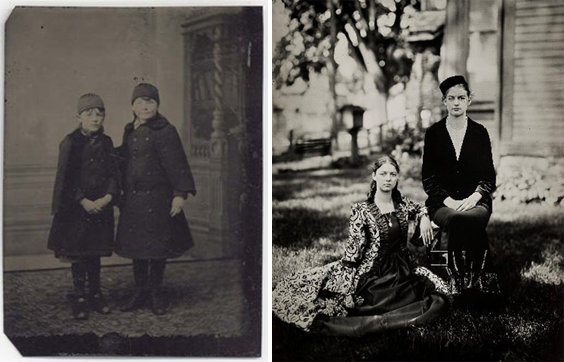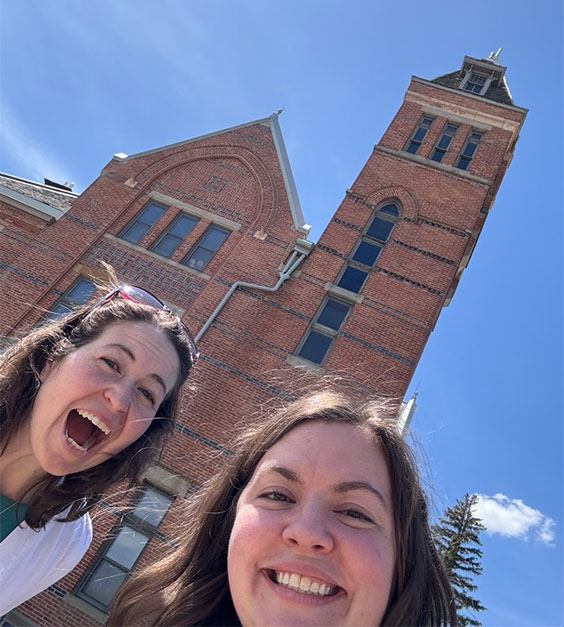State Archives’ Fargo Forum Questionnaires Bring Subjects to Life
This summer, I was hired at the North Dakota State Archives as an intern working on manuscript collections donated by private individuals and organizations. I cataloged and digitized land patents, citizenship certificates, biographies, autobiographies, photographs, and short sketches of men and women from early North Dakota history.
These types of papers contain various elements, which create a comprehensive picture of lives that came and went in very different ways. Yet their stamp on North Dakota history cannot be taken for granted.
One of my favorite collections I worked on included some biographies that were done through the Fargo Forum. Consisting of four pages, these were intended “to obtain accurate knowledge of your life, when news stories justify inclusion of biographical matter pertaining to you.” This biography questionnaire is particularly unique because of the spotlight it shines on participants’ genealogical information.
These questionnaires were meant to inform future North Dakota-related stories. Now they are helping us fill in information about the lives of early North Dakota settlers.
Check out some examples below!
This first form contains information about Michael L. Keeley’s life filled out by his son, Ronald Keely.
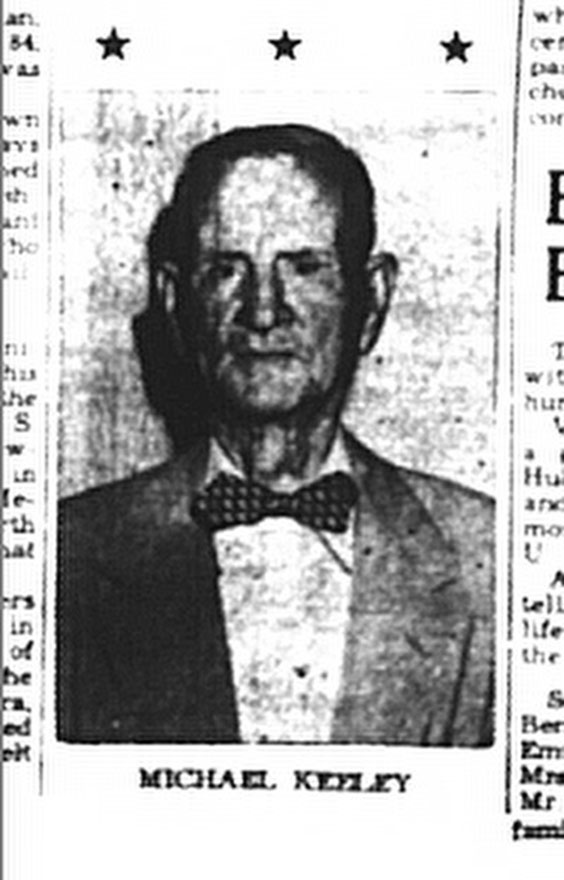
Photo of Michael Keely that appeared with his obituary in the Oct. 31, 1957, Hazen Star.
Michael (Mike) Keeley was born Sept. 24, 1873, in Winnipeg, Canada, to John Keeley and Elizabeth Moran, both originally from Ireland. In 1902, he married Alice Gallagher in Hazen; they had their only son, Ronald Keeley, in 1912. Mike and Elizabeth were pillars in the community, working as ranchers and farmers and later owning and managing a hotel.
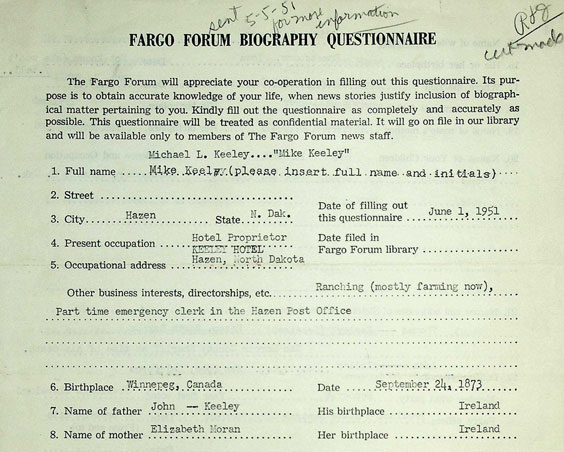
SHSND SA MSS 90033
A few fun elements of note:
Ronald didn’t know his mother’s birthday because “she won’t tell.”
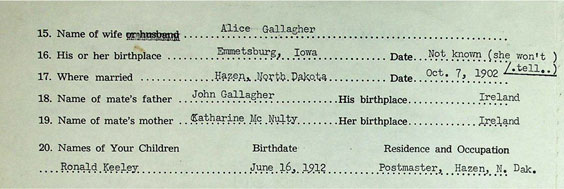
SHSND SA MSS 90033
Mike “gave the land [for] and solicited to build the” St. Martin’s Catholic Church.

SHSND SA MSS 90033
Mike talks about the experiences of his mother, Elizabeth Dunlavey Dolan, working as “head cook” for the Northern Pacific Railway in Dickinson and then Medora. He mentions that Theodore Roosevelt and the Marquis de Morès were “frequent visitors” to her table at that time. But that “no one paid much attention to them then.”

SHSND SA MSS 90033
This second questionnaire contains information about William Oscar Ward’s life filled out by his daughter, Belle (Ward) Shute.

William Oscar Ward. SHSND SA 2016-P-043
William Oscar Ward was born May 3, 1839, in Erie, Pennsylvania, to Jeremiah Ward and Emma Jeannette Loomis, both originally from the East Coast. He married Florence Jane Manley in 1869 and had seven children with her. A self-educated man, William fought in the Civil War and then worked as a rancher, farmer, and dairyman for most of his life.

SHSND SA MSS 90062
Some of his more interesting responses include the following:
Asked “Where were you as a child?”, William noted: “In the woods of Northwest Pa.”

SHSND SA MSS 90062
William’s Civil War military record includes participation in Sherman’s March to Sea and the battles of Gettysburg and Vicksburg.
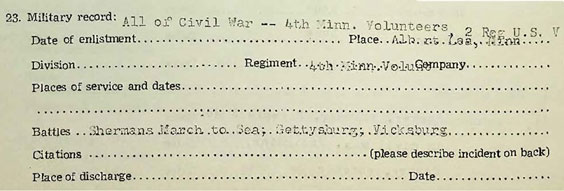
SHSND SA MSS 90062
A letter from his daughter Belle regarding Jennette, his oldest daughter, notes that she and another girl were “the first students ever graduated from the Bismarck High School.”

SHSND SA MSS 90062
- William’s daughter listed “purposeful occupation, honesty, and justice” as his hobbies.
Other interests included “community advancement, a city parking system, and a Protestant cemetery for the city.”

SHSND SA MSS 90062
It has been a joy to explore early North Dakota through the lives and stories people from the past took the time to write down for themselves or future generations. This aspect of history continues to intrigue me and pull me further into the world of archives. A big thanks to Manuscript Archivist Emily Kubischta and the rest of the State Archives and reference team for giving me space to learn and experience the personal side of history through these collections.


